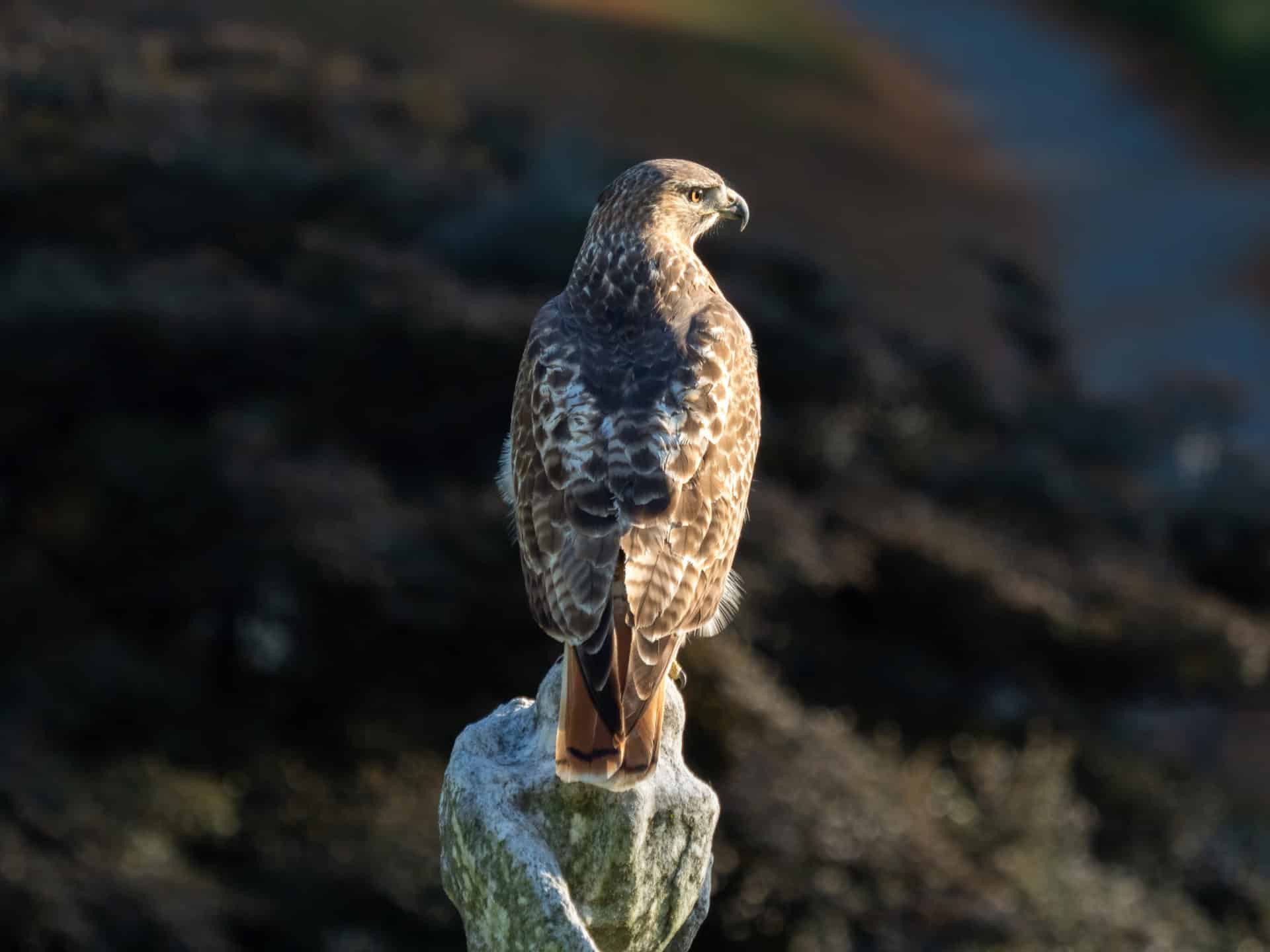Birds
Red-tailed Hawk
Buteo lineatus

Voice: Fast, high pitch scream, “Keeyer, Keeyer, Keeyer.”
Red-tailed hawks are probably the best known and most widely distributed of all North American birds of prey. These common roadside birds can be found in every type of semi-open habitat on the continent, including scrub desert, grasslands, agricultural fields, pastures, urban parks, patchy woodlands and tropical rainforests. In Ohio they display a preference for drier upland habitats with elevated perches. The greatest numbers of red-tailed hawks occur in Ohio’s open farmlands and fields.
An average territory size for a red-tailed hawk is approximately 2.2 square miles (Palmer 1988). In Ohio they remain on their territory year round spending most of their time perched on poles, fences or the limbs of trees –often dead trees – searching for prey. Red-tailed hawks are very adaptable when it comes to their diet. Voles, mice, rabbits, squirrels and chipmunks make up the bulk of their diet. They also feed on medium size birds, reptiles, amphibians and large insects. They have also been observed feeding on road kill.
Red-tailed hawks are monogamous and may mate for life. They have been known to reuse old nests from previous mating seasons rather than build a new nest each year. Nest construction or repair begins on warm mid–winter days, primarily in late February and March. The male and female both construct the nest in a tall tree, 13 to 69 feet above the ground. Nests are 28-36 inches across constructed of twigs and lined with bark, pine needles and other soft plant material. Females lay one to five eggs each year in April or May. Both sexes incubate the eggs for four to five weeks and feed the young from the time they hatch until they leave the nest, about six weeks later. Young are dependent on their parents for food for an additional one or two months after leaving the nest.
Red-tailed hawks were heavily persecuted and falsely blamed for ravages on poultry population during the first decades of the 20th century, which significantly reduced their abundance statewide. Today, most likely due to its adaptable behavior, red-tailed hawks are a very common species across their range.
Photo Credit: Rhododendrites, CC BY-SA 4.0 , via Wikimedia Commons
Best Location to View: Sperry Road, Strong Acres
Color: Eastern Race: brown above and white below; dark streaking band on chest. Adults have a dark rusty red tail; juveniles have a brownish tail with multiple black bands.
Range: Canada, Mexico, North America
Size: 18-24"



